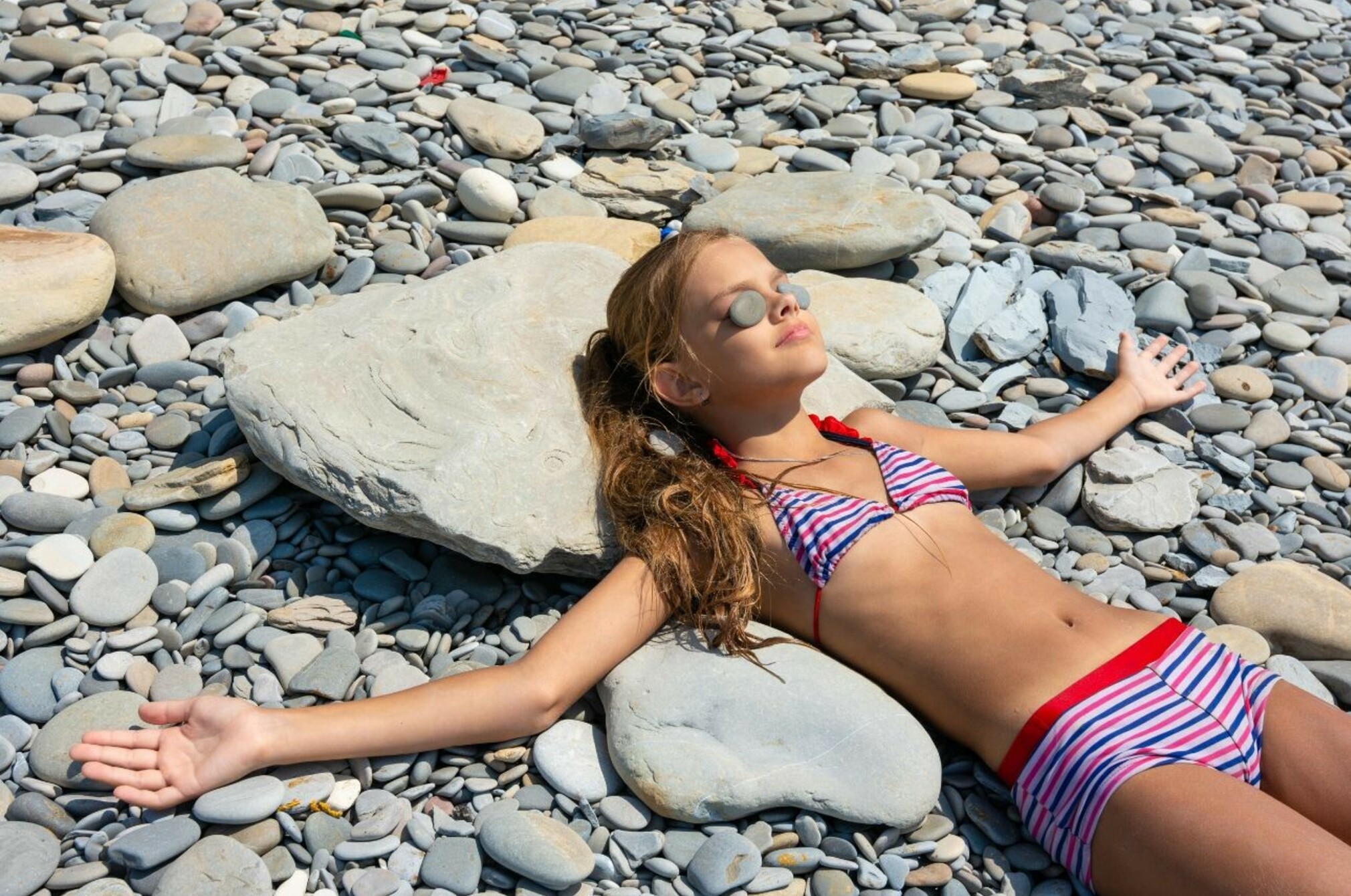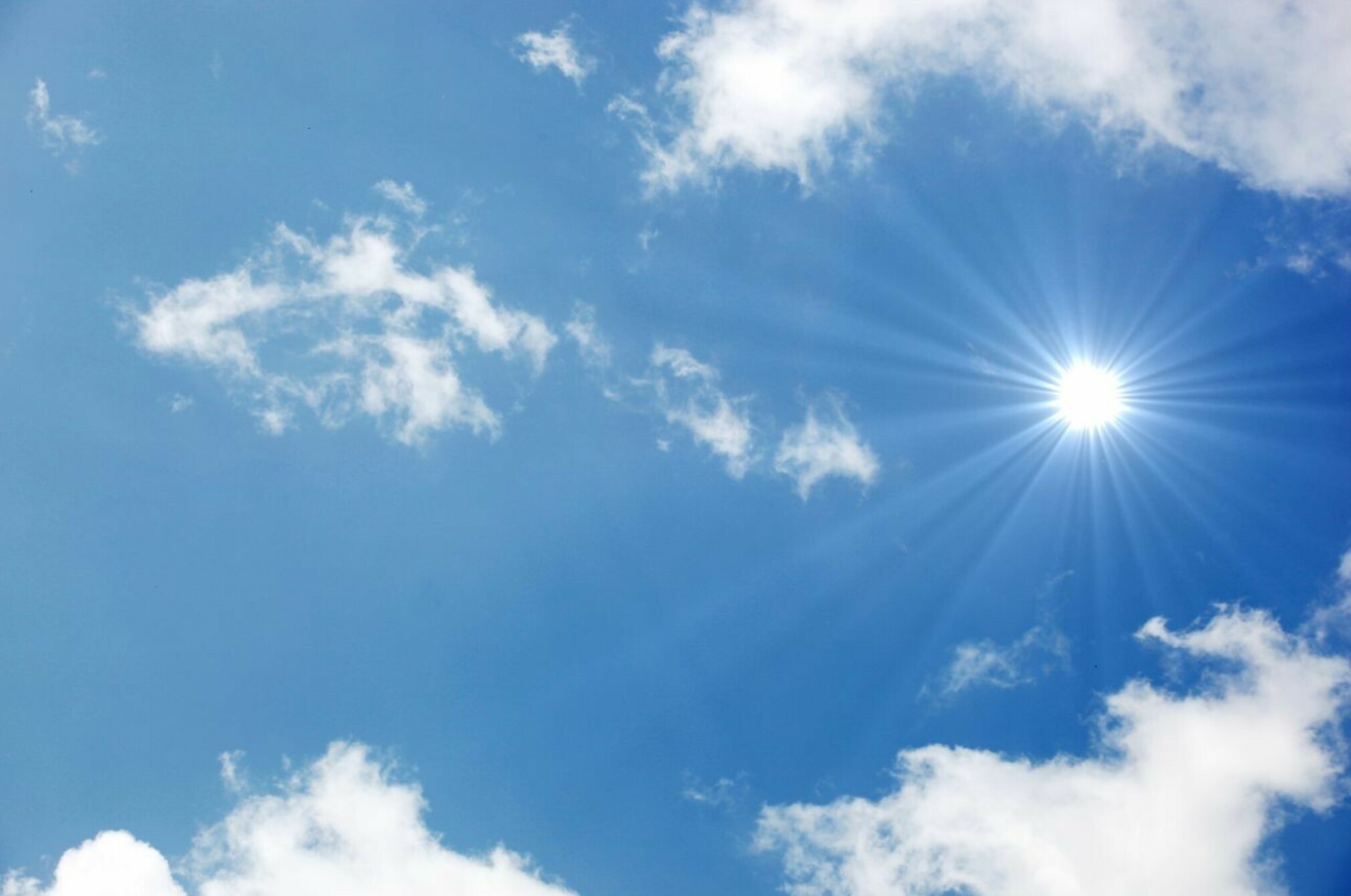The TikTok tanning trend putting kids at risk

I was horrified when my daughter Sophia (13) asked if she could ditch school one day last year to stay home and tan because the UV index (UVI) was going to hit 10. Despite not knowing what the UVI means, Sophia and her friends became obsessed by checking it in the morning to see when the ultimate tanning time would be.

The UVI measures the level of radiation from the sun. It considers several factors, including the time of day and cloud cover, and a location’s altitude and closeness to the equator. It’s helpful for checking when the sun’s rays are the most damaging.
The higher the UVI number, the greater the risk and less time it takes to cause skin and eye damage. In summer, New Zealand’s UVI can get up to 12 (but can exceed 13 in the far north).
When the UVI is 3 or higher, health agencies recommend using sun protection. However, according to Sophia’s “sources”, a UVI of 8 or higher was the best time to tan. Despite knowing they shouldn’t tan for long, I saw photos of some of her friends who had been badly burnt from their tanning routine.
I asked Sophia and her friends why getting a tan was important to them. “We like to see our tan lines”, “It looks healthy”, “Everyone is doing it”, and “We’ve seen videos online”, were some of their responses.
The source of this online tanning advice is social media platforms like TikTok and Instagram. Influencers show off their tan lines and encourage people to tan when the UVI is high. I found TikTok content with statements such as, “Seeing how tan I get after 20 minutes in UV 14” and screenshots of UVI tanning apps stating, “UV Index 9 perfect for you.”
I spoke to experts about this dangerous trend, which is currently captivating young girls, and whether it’s time for New Zealand to consider a social media ban for young teens.
Is the tanning trend dangerous?
Dr Louise Reiche, a dermatologist and past-president of the New Zealand Dermatological Society Inc, said it is extremely concerning young people are tanning when the sun is at its most damaging.
“Tanning when the UVI is high is essentially cooking your skin. It considerably increases the risk of sunburn, damage to the skin’s immune system, and loss of skin elasticity which can cause wrinkles and blotchy skin pigmentation.”
It also increases the risk of skin cancer. The more you are exposed to UV radiation at a young age, the greater your risk of developing skin cancer when you’re older.
Reiche said young people need to be reminded there’s no such thing as a safe tan.
“A tan is a sign that skin damage has already started, so you should be more careful about protecting it. Any further UV radiation will only add to the damage, resulting in wrinkled leathery skin – something young girls won’t be thinking about when they’re baking in the sun.”
It’s also important to consider how long you’re outside.
“Spending long periods outside, even when the UVI is low and you don’t get sunburnt, can add up and cause skin damage – lower intensity UVI will just take longer to cook the skin,” said Reiche.
Why are kids and young teens getting hooked on tanning?
Bodo Lang, a professor of marketing analytics at Massey University said social media platforms, such as Instagram, TikTok and YouTube, are highly influential channels and influencers may play a crucial role in shaping consumer behaviour, particularly for teens.
“Teens are highly impressionable and often view influencers as relatable figures so trust their recommendations, regardless of whether the influencer is qualified or independent. Influencers are typically judged by the entertainment value of their content, rather than its credibility. Visual content, such as tan lines, are particularly effective attention getters to hook teens into misleading and dangerous content.”
Professor Lang said teens are also heavily swayed by their peers and research has shown that peer acceptance is crucial for teens.
“If a teen views a behaviour online that’s backed up by what their friends are doing, it’s very likely they’ll do it themselves. To complicate matters further, teens are at a stage where they start to actively decouple from their parents. So well-intended advice by parents about sun tanning is likely to be ignored.”
Professor Lang said one way to overcome this is to act more like an influencer – make your advice humorous and entertaining and make it specific to them rather than making general statements: so more “Continue doing that and you’ll soon look like Nanna’s handbag” and less “Tanning causes skin damage”.
Australia’s Cancer Council is concerned about the online tanning advice trend, which contradicts its sun safety messages and glamourises sun tanning culture. To try and counter the dangerous messages, the organisation has launched a campaign – “End the Trend” – to try and stop normalising a suntan.
The campaign uses social media influencers like Tess Alexander and Molly O’Halloran to promote sun safety messages. Content includes Alexander’s “5 things to up your sun safety fashion game” and messages about embracing your natural skin tone.

Is it time to regulate social media for young people?
Last year, the Australian Government passed a bill that will ban social media platforms for people under the age of 16 (up from the current age of 13). Platforms, including TikTok, Facebook, Instagram and Snapchat, will have a year to comply with the proposed regulations or face fines of up to nearly AU$50 million.
Responsibility for enforcing the ban will lie with the companies (not parents) – the tech giants will need to implement an age verification system. The ban will apply to all young people under 16, including those who already have an account, even if it’s been opened with parental consent.
As a family, we followed this announcement with interest. While the kids thought the Aussie plan was “the worst thing ever”, my husband Jeremy and I had a different opinion. While we get that social media is a useful way for our kids to connect with their friends, it drives us crazy that the first thing they do when we get home, is pick up their phones.
Dr Samantha Marsh, a senior research fellow in the Department of General Practice and Primary Care at the University of Auckland said we can’t continue to leave this issue up to parents and kids, so a similar ban in New Zealand is needed.
“Social media has been linked with several potential harms, including anxiety, depression, self-harm, eating disorders and cyberbullying. It can also negatively impact on important lifestyle behaviours linked with physical health and wellbeing, such as sleep, diet and exercise. Social media also increases the risk of exposure to porn, online predators and sextortion.”
Dr Marsh is also concerned about the ways social media displaces activities known to be crucial for adolescent development and wellbeing, such as family attachments, face-to-face interactions, and time spent with their own thoughts and ideas. She said the long-term impacts of missing out on these things will likely not be known for decades.
“Currently social media is not a safe place for children and teens. The design technology is similar to that used in gambling, so has the potential for addiction.”
Critics of the ban say downsides are that young people will lose access to the positive aspects of social media, and those in remote or minority communities will be further isolated.
Dr Marsh said the research doesn’t back these concerns. Research shows youth seeking mental health support on social media often come across triggering content, and the advice they receive usually isn’t evidence-based. Marsh said it’s also important to remember it’s a social media ban, not an internet ban. So, there’s still options for connecting and accessing support in potentially safer ways.
Brent Carey, chief executive of Netsafe, is one industry expert who doesn’t support a ban. He says an age ban is not a silver bullet to protect our young people.
“The debate should be about helping young people develop the skills they need to self-regulate, manage distractions and make informed decisions. It’s equally important to acknowledge that young people can have positive online experiences too, such as connecting with causes, getting help, or identifying with communities they identify with online.”
Netsafe believes social media platforms have a social responsibility to make their spaces safer and more positive for young users, and by simply banning young people, the pressure for companies to improve their platforms is removed.
“What’s missing in this discussion is the need for digital literacy for our young people and their parents. Kids and young teens need to be taught the risks and recognise potential hazards to keep themselves safe online. There's also several parental controls with regards to screen time and social media usage that can help keep kids safe. We don’t want a ban driving social media use to occur in secret or cutting younger people off from the services and networks critical to their health.”
An open letter to the Australian government, signed by more than 140 academics and organisations, stated that any restrictions in the digital world must be designed with care, and the signatories were concerned a ban would be too blunt an instrument to address the risks effectively. Netsafe said, considering the potential impacts described in the open letter, it’s concerned a similar approach would likely produce more – not less – work for its organisation.
“Netsafe will continue to advocate that the platforms carry the heaviest weight of responsibility when it comes to building safer online spaces for everyone,” said Carey.
Although Dr Marsh acknowledges the problem is complex and education is critical, she believes a social media ban would be a further step to protecting our vulnerable children and young teens – backing up the removal of smartphones from schools last year.
“A ban would also send a sign that the government acknowledges these platforms are harmful to our kids and could help change social norms around letting kids have access to a harmful product.”
Dr Reiche’s top sun safety tips
- When the sun’s rays are most intense (between 10am and 4pm from September to April or when the UVI is greater than 3), limit your time outside.
- When you’re out and about, cover up with suitable clothing (preferably UPF50+), a broad-brimmed hat and UV-protective sunglasses. On uncovered areas, use a broad-spectrum sunscreen that is SPF30 or higher (the New Zealand Dermatological Society recommends SPF50+ for greater protection) and water resistant.
- Apply sunscreen early (at least 20 minutes before going outside), apply plenty (about 2 teaspoons for each leg, and 1 teaspoon for each arm, your back, your front and your face, which includes your neck and ears), and apply it often (every 2 hours you’re outside and after mopping up sweat, swimming and towelling dry).
We've tested 169 sunscreens.
Find the right one for you.
Aloe Up

Aloe Up

Aloe Up

Member comments
Get access to comment